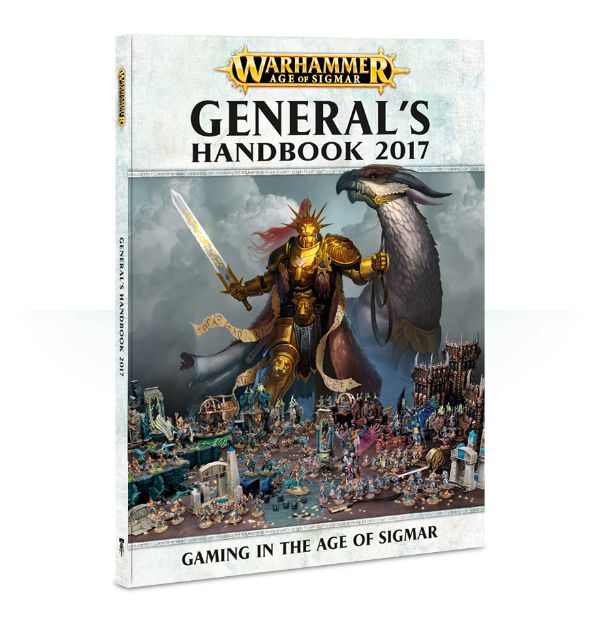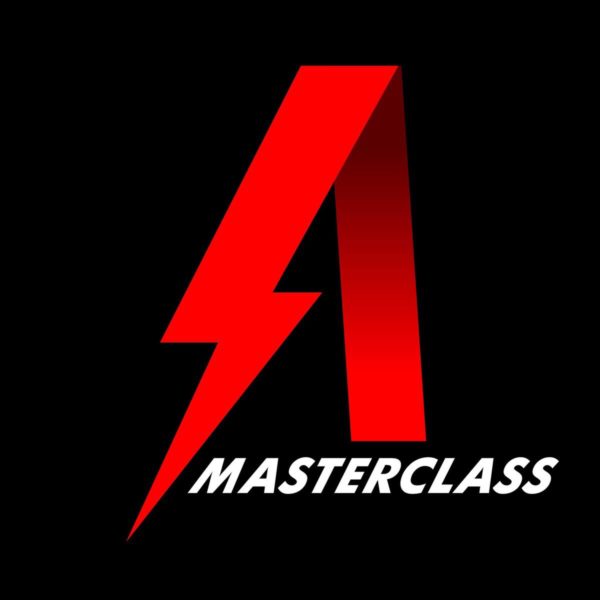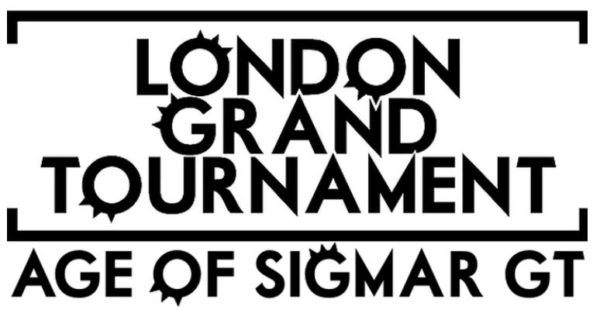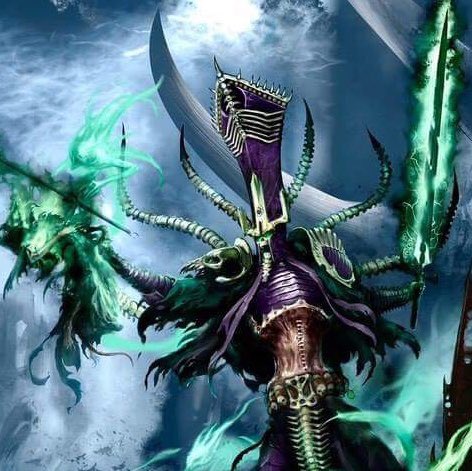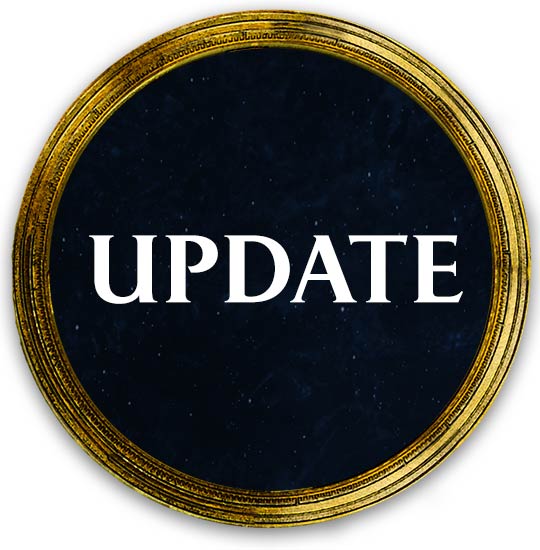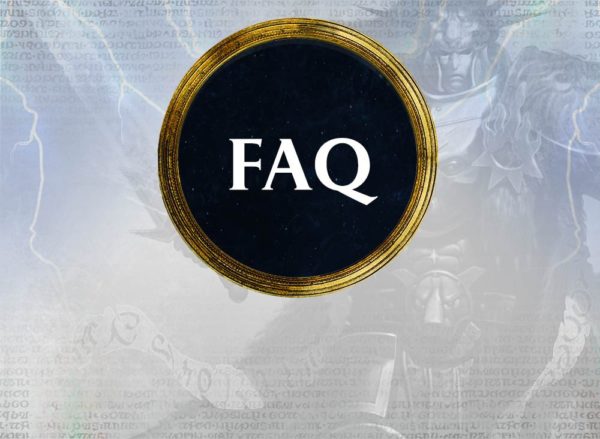Hi everyone, in today’s update, we cover each of the General’s Handbook 2017 scenarios. Having had the book for a few months now, it is a perfect opportunity to record some on strategy and tactics for each of the General’s Handbook 2017 scenarios with the benefit of plenty of play.
Joining me is Chris Welfare (@WoundedMortally) of the excellent competitive Age of Sigmar show, the Mortally Wounded podcast . Chris is #5 in the Australian rankings, and even came 3rd at the Element Games Grand Slam this year on a trip to the UK.
Knife to the Heart (Similar to take and hold)
[podbean resource=”episode=p77r6-7d4116″ type=”audio-rectangle” height=”100″ skin=”2″ btn-skin=”107″ share=”1″ fonts=”Helvetica” auto=”0″ download=”0″ rtl=”0″]
- Deployment Zone: Diagonal deployment
- Distance: Set-up only 9” away from enemy territory (18” apart)
- Objectives: two objectives placed 20” in from each deployment corner
- Capturing:
- Control at the end of any turn (within the battleround)
- 5 or more models (from any number of units) within 6” AND no enemy models within 6”
- Victory
- Major win from battleround 3 onwards if control both objective
- Otherwise minor win on kill points
- As Tom Mawdsley mentioned on Facehammer, it can be worth considering how you will play Knife because if you can win a major on this then you can pull away from the rest of the pack fighting for the podium.
Army Strengths & Weaknesses
- Favours hammer and anvil forces – 50% static Defensive, 50% mobile offensive (e.g. Hammerstrike Force + Thunderhead brotherhood)
- Defensive forces tend to win on the minor due to 50% of an army attacking 100%.
- Alpha-strike lists mixed success, first turn strikes usually lose due to above if opponent bunkers and army is not full alpha strike. Therefore, alpha strikes need to send 90%+ across the board.
- More successful alpha-strikes tend to be those that can delay until choosing – e.g. ripperdactyls in a shadowstrike
- Strong for Kharadron Overlords, Arkanaut company with light skyhooks on home objective, clown car attacks enemy objective – balloon boys grapneling across late game.
- Weak for elite armies due to low model count, e.g. Beastclaw as need at least 10 models alive to be able to score a major – However Skal can be key to winning with beastclaw due to delayed ambush of 5 (or more) models onto home objective (which opponents often forget about), letting you run entire powerhouse army at opponent to smash them off
- Late teleport – protect your home objective, chip away from distance and then assault their objective late game – think Sylvaneth, Vanguard SCE
Check out Russ Veal’s tactica for the scenario over on Warhammer Community.
Total Conquest
[podbean resource=”episode=m79yx-7d415e” type=”audio-rectangle” height=”100″ skin=”2″ btn-skin=”109″ share=”1″ fonts=”Helvetica” auto=”0″ download=”0″ rtl=”0″]
- Deployment Zone: Zig-zag deployment
- Distance: Set-up only 9” away from enemy territory (18” apart)
- Objectives:
- four objectives placed 12” deep and 18” wide from the board edges ie in the centre of each board quarter.
- Capturing:
- Control at the end of any turn
- Unit of 20 or more models (only need 1 model within range) within 6” if no enemy unit of 20+ within 6”, otherwise most models within 6”
- A unit can only contribute towards scoring a single objective each turn
- Tap and go objectives
- VP Scoring
- 1 point scored for each objective controlled at the end of each player turn
- 2 points instead if it was taken from the opponent that turn
- Victory
- Major win at the end of the game for most points, otherwise minor win on kill points if tied on objective points
Army Strengths & Weaknesses
- Favours horde armies, especially with resilience (30 man Nurgle units) very strong due to closer deployment making up for low movement.
- Can be favourable to let opponent go first so they only score 1 point in their first turn, where you can score two by taking it back. So if your opponent gives you the turn, consider whether you can hold the objective against the counterpunch.
- Death star armies can be strong due to tap and go objective scoring. Love this with my Hunters.
Check out Russ Veal’s tactica for the scenario over on Warhammer Community.
Duality of Death (Similar to Three Places of Power)
[podbean resource=”episode=75uef-7d4171″ type=”audio-rectangle” height=”100″ skin=”2″ btn-skin=”109″ share=”1″ fonts=”Helvetica” auto=”0″ download=”0″ rtl=”0″]
- Deployment Zone: Central rectangle deployment, 12” in from the sides, 12” deep.
- Distance: Set-up 12” away from enemy territory (24” apart)
- Objectives:
- Two objectives on the centre line, 18” in from the board edges
- Capturing
- HEROES and Behemoths control objectives
- Not all MONSTERS are behemoths and not all behemoths are MONSTERS) so be careful with controlling units (e.g. Khorgoraths not allowed – any other examples? Hydra etc?)
- HEROES and Behemoths control objectives
-
-
- Control at the end of any move (but not retreats) if ending within 3”.
- Move excludes set up – SCE, Fyreslayers, Sylvaneth
- First to arrive controls it, if controlling model is slain by enemy HERO or Behemoth within 3” then they gain immediate control.
- If controlling model is killed by another unit, then
- Additionally any non-Behemoth HERO heals wounds equal to VPs scored.
- Good for Prime etc. Bad for Treelord Ancient.
- Control at the end of any move (but not retreats) if ending within 3”.
-
- Scoring:
-
-
- VPs scored at the end of your turn – equal to number of your turns of control from THAT model.
- Favours seizing when you can get a double turn.
- Need a quick game for fairness.
- VPs scored at the end of your turn – equal to number of your turns of control from THAT model.
-
- Victory
-
- Major win at the end of the game for most VPs, otherwise minor win on kill points if tied on objective points
Army Strengths & Weaknesses
- Resilient HEROES/ Behemoths obviously strong, e.g. Stardrakes. Due to cumulative scoring.
- Numerous HEROES not actually required due to low number of objectives,
- 1 can be enough to win,
- however Stormcast usually strong in this scenario due to lots of relatively cheap but resilient heroes (3+ save/2+ with staunch defender-2 against shooting from mirror shield).
- However mortal wounds are an issue (Tzeentch wizards).
- Tzeentch and Fyreslayers also have large numbers of heroes in lists normally but not as resilient.
- Objective denial through unit blocking can be critical to success (3” is a small control zone which can be denied through model placement)
- Weak for armies with little ranged threat to kill bubble-wrapped characters
- Strong for turn 1 tunneling/lightning strike armies, as centralised deployment zones force 12” gaps to the side, meaning 9” spaces can be exploited
- Extremely strong for Fyreslayers against armies with little shooting, due to turn 1 runesmith tunneling onto objective surrounded by Vulkites. Won’t score turn one but you’ll be very hard to shift.
Check out Russ Veal’s tactica for the scenario over on Warhammer Community.
Battle for the Pass (Similar to Border War)
[podbean resource=”episode=ve9n3-7d4194″ type=”audio-rectangle” height=”100″ skin=”2″ btn-skin=”109″ share=”1″ fonts=”Helvetica” auto=”0″ download=”0″ rtl=”0″]
- Deployment Zone: Lengthways deployment
- Distance: Set-up 12” away from enemy territory (24” apart)
- Objectives: four objectives placed 18” deep and 12” wide from the board edge
- Capturing:
-
- Control at the end of any turn
- Unit of 20 or more models (only need 1 model within range) within 6” if no enemy unit of 20+ within 6”, otherwise most models within 6”
- A unit can only contribute towards scoring a single objective each turn
- Tap and go objectives
- Scoring
-
-
- 1 point scored for own deployment zone objective,
- 2 for each central objective and
- 4 for enemy deployment zone objective.
- 9 points available a turn.
-
- Victory
-
- Major win at the end of the game for most VPs, otherwise minor win on kill points if tied on objective points
Army Strengths & Weaknesses
- Favours horde armies, due to 20+ units trumping model count.
- Use waves to keep disrupting the enemy held objectives.
- Also favours summoning/tunneling/lightning strike armies, as deeper deployment zones often leave larger gaps behind enemy forces meaning 9” spaces can be exploited to get close to their home objective which is worth the most points. Big thing to watch out for.
- Usually strong for Sylvaneth if taking turn 1, as can usually bunker down on home and both side objectives in woods and hold for 3-4 turns, not needing to over extend and go for opponents home objective.
- However no longer as easy for tree revenants to steal opponent’s home objective with a late game teleport due to objective being further from the board edge.
- How I love to play it. Harder due to model count now, unless running dryad heavy.
Check out Russ Veal’s tactica for the scenario over on Warhammer Community.
Starstrike (Similar to Gift from the Heavens)
[podbean resource=”episode=6qag7-7da4c7″ type=”audio-rectangle” height=”100″ skin=”2″ btn-skin=”109″ share=”1″ fonts=”Helvetica” auto=”0″ download=”0″ rtl=”0″]
- Deployment Zone: Regular deployment (72” x 24”)
- Distance: Set-up 12” away from enemy territory (24” apart)
- Objectives:
- One objective lands on the centre line at the start of the second battleround, BEFORE priority. 1-2 left hand side, 3-4 centre and 5-6 right hand side.
- 18” in from the board edges or centre of the board
- Third battleround BEFORE priority 2 more objectives land, 1 on the centre line of each territory, randomised as before
- Capturing:
- Control at the end of any turn
- More models within 3”
- A unit can only contribute towards scoring a single objective each turn
- VP Scoring:
-
- Points scored per controlled objective equal to current battleround.
- Again quick play needed for fairness
- Don’t lose heart. Game can swing really quickly.
- Points scored per controlled objective equal to current battleround.
- Victory:
-
- Major win at the end of the game for most points
- minor win on kill points if tied on objective points
Army Strengths & Weaknesses
- Favours fast/teleporting/summoning armies and resilient/summoning armies. Fast/teleporting/summoning armies strong early game due to ability to adapt to randomness of objective positioning, resilient/summoning armies strong late game due to increased points per objective.
- Potentially a good scenario to go first in, in order to ‘waste’ opponents double turn from 1-2 and aim for a late game double turn. Ability to react to the second drop, gain points to pull into the lead and then hold on.
- Seraphon potentially very strong (dependant on list design), due to delaying ripperdactyls until objectives placed, and Lords of space and time allowing 1-2 units to teleport each turn.
Check out Russ Veal’s tactica for the scenario over on Warhammer Community.
Scorched Earth
[podbean resource=”episode=iuhxr-7da4d3″ type=”audio-rectangle” height=”100″ skin=”2″ btn-skin=”109″ share=”1″ fonts=”Helvetica” auto=”0″ download=”0″ rtl=”0″]
- Deployment Zone: Regular deployment (72” x 24”)
- Distance: Set-up 12” away from enemy territory (24” apart)
- Objectives:
- Six objectives, 3 on the centre line of each deployment zone, 1 central and two 12” in from the board edges
- Capturing
-
- Control at the end of any turn
- More models within 3”
- A unit can only contribute towards scoring a single objective each turn
- VP Scoring
-
- 1 point scored per controlled objective at the end of each player turn, but can raze (destroy) an objective held in enemy territory for D3 points.
- Victory:
-
- Major win at the end of the game for most VPs
- minor win on kill points if tied on objective points
NB: getting house ruled at some tournaments. Reasoning being that by preventing burning it avoids the non-game for some armies. Player enjoyment key driver because not everyone will have the ability to (or want to) adapt to face a Murderhost in this scenario.
Army Strengths & Weaknesses
- Murderhost known to be very strong due to extremely fast turn 1 movement and hitting power, usually able to raze all 3 objectives in enemy territory on turn 1.
- However can be countered by Tzeentch splitting horrors from a line to a clump, due to contracted area around objective and smaller base size outnumbering the line of bloodletters.
- Can also be countered if you outdrop the murderhost and can take first turn (ie you have 1 or 2 drops). Push the murderhost back by focusing on one part of the board.
- Similar tactics can be used by other armies with chaff units on 25mm bases if standing in a central clump behind a unit on the 12” line as bloodletters often need to spread in a line to get all their attacks so won’t all be within 3”.
- Standing further back from the objectives while risky, can also prevent turn 1 razings by denying charges. Murderhost needs to move 22” on turn 1 to be in range of an objective. Average move is 23” (5D6 +6”) so not too unlikely that at least some units will fail. Benefit is your units don’t die and can then push back over a double-turn.
Check out Russ Veal’s tactica for the scenario over on Warhammer Community.
Links
- Chris’ Mortally Wounded podcast
- Chris on Twitter (@WoundedMortally)
- All the General’s Handbook 2017 information on AoS Shorts
- Updated Total Conquest map

